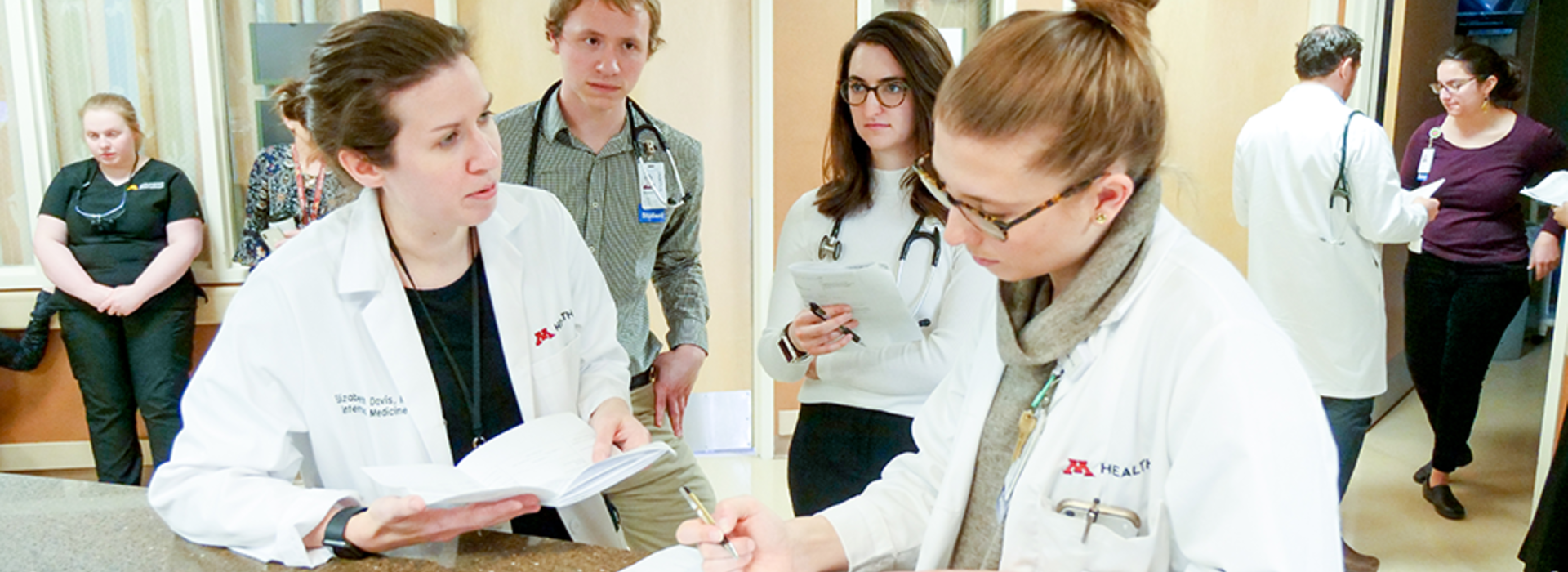
U of M Faculty Develop Virtual ICU Curriculum for Medical Students
When the COVID-19 pandemic first began, medical schools were quickly forced into uncharted territory. In-person lessons were exchanged for virtual instruction, and age-old methods were traded for new, creative curricula.
One such method is the fourth-year ICU clerkship required of medical students at the University of Minnesota Medical School. During this month-long rotation, medical students learn from faculty and have the opportunity to practice what they’ve learned by diagnosing and treating critically ill patients. However, the COVID-19 pandemic has made it nearly impossible for medical students to enter the ICU ward, as this would put ICU patients and students at further risk.
Recognizing the risk, along with the value that an ICU clerkship rotation adds to a medical student’s understanding of medicine, a team of U of M faculty led by Ronald Reilkoff, MD, assistant professor in the Department of Medicine’s Division of Pulmonary, Allergy, Critical Care and Sleep Medicine, decided to flip the curriculum and provide a virtual experience that would hopefully be followed by time in the wards. With the help of a COVID-19 Medical Education Innovation Grant from the Medical School, the team developed and implemented a virtual care curriculum that mimics the experience a fourth-year medical student would have in the ICU during an in-person clerkship. With the permission of current and former ICU patients, the course contains a series of modules with actual cases for medical students to diagnose and treat.
“The original premise was to mimic what it is like walking into the wards on your first day of rotation, and being told to ‘Go see the patient in room 365,’” said Dr. Reilkoff. “‘It’s a person who came last night with a sudden collapse. You have half an hour to see them. Come back, tell me what you think happened, what is going on and what you would like to do next.’”
For these fourth-year medical students, walking into the ICU wards is often intimidating, according to Dr. Reilkoff. He said, “It can be scary the first time you are tasked to take care of a critically ill patient. The patient care is complex and multifaceted, and the tasks are daunting particularly when you have to act with limited information initially. However, if you learn to be methodical and systematic in your observations and assessments, you can piece together and initiate a plan for most any circumstance. These experiences and exposures to real ICU patients promote the skills necessary for quick and thorough information evaluation and responses. So, we’re kind of throwing them off the deep end to learn how to swim. And, it’s been wonderful because every single student has risen to the challenge.”
In fact, Dr. Reilkoff expects the teaching team will decide to keep this new curriculum around, even after COVID-19 is gone. “It works because every student can be given the same case, so we’re really able to standardize and objectively assess how they’re doing,” he said.
The video format also allows for students to comment on each other’s diagnoses—like they would during rounds—develop their own approach to the “risk-benefit” environment of the ICU and gather direct feedback from peers and faculty to improve their skills.
Dr. Reilkoff said, “For critically ill patients, it’s a game of inches and you need to pay attention to details to mitigate active issues and prevent further complications to try and tip the scales in favor of the patients and improve their outcomes. For our students, some of the early feedback we're receiving is that this really helps them feel more secure and better equipped coming to the wards.”